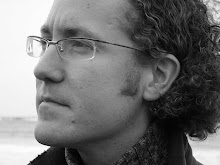Sorry it has been so long since I last wrote. I didn’t mean to imply that I wasn’t interested in you anymore…..you know, things just come up…..distractions……I still love you….
Whoops! I thought I was writing an e-mail for a second (lets hope my girlfriend doesn’t find out). I do regret not blogging, however. I’ve actually had lots of experiences over the last month that I should have blogged but I guess there was just too much and too little time. I’m finally fully immersed in writing my thesis. No distractions (well almost none). I get into my office in the morning and start writing then leave in the evening (with a brief break for lunch to watch trailers on-line…I’m a trailer junky). The thesis is coming long slowly but it is coming. I’m currently writing a section on the Kuleshov effect which should form the bridge between my introduction and the main theoretical and empirical section of my thesis.
Wait, what’s that? You don’t know what the Kuleshov effect is! Shame on you, you haven’t been reading my blog in detail. I summarised the Kuleshov effect in my ‘Edgecodes’ post. Basically it is the effect of juxtaposing the shot of an expressionless face with shots of different objects which results in the audience perceiving different emotions in the face. It, along with other pseudo-experiments conducted by soviet filmmakers Kuleshov and Pudovkin in the 1920s forms the theoretical basis of the cinema we are all familiar with today. It is a really useful reference for my thesis as it shows an attempt to merge film theory with scientific experimentation. As this is exactly what I am attempting to do it serves as a great example of how it should and shouldn’t be done. The Kuleshov experiment has been repeated many times since Pudovkin first reported it, each repetition adding slightly more to our understanding of how it works. The effect now exists in a strange duality where film theorists doubt its authenticity due to evidence that suggests the original experiment never actually took place and recent attempts to repeat it which have failed* whilst psychologists and filmmakers treat the effect as an established fact. In the section I am writing right now I am trying to resolve this two viewpoints and show how better science actually leads to better film theory.
The main reason why we should believe that the Kuleshov effect exists is its continual successful use in cinema. In June’s edition of Sight and Sound magazine, Greg Araki directly referenced the Kuleshov Effect when explaining how it managed to depict the emotionally shattering actions in his film Mysterious Skin without having to show them. The film follows the early life of two boys who were abused by their Little League coach when they were 8. The subject matter of the film is grotesque in the extreme, paedophilia, gay hustling, sexual abuse, baseball, but the film’s aesthetic and its emotional effect on the audience resonates with beauty. Part of the reason for this is probably Araki’s emphasis on facial Close-Ups (CU) for a large portion of the dramatic scenes. Due to the young age of the child actor’s he didn’t want to have to actually show the abuse that was occurring so instead it is all implied through the actor’s facial expressions. The effect is astounding, you believe that the abuse has taken place and that you have been affected by it when in reality you have seen very little. The film orchestrates the viewer’s emotional responses through the use of these Close-ups, beautiful atmospheric music (wonderful use is made of Sigur Ros), quiet Long-shots, and perfect pacing. I left the film in a detached state that stayed with me all evening and still returns to me every time I think of the film.
The interesting thing about Araki’s use of the Kuleshov effect as rationalisation of his use of facial CUs is that he does not surround the CUs with shots of the action or objects which, in the original Kuleshov experiment, imbued the CUs with meaning. In fact Araki’s use is almost counter the Kuleshov effect: the expressive power of the human face without context. As Ingmar Bergman stated so astutely “Everything begins with the actor’s face”.
and




No comments:
Post a Comment